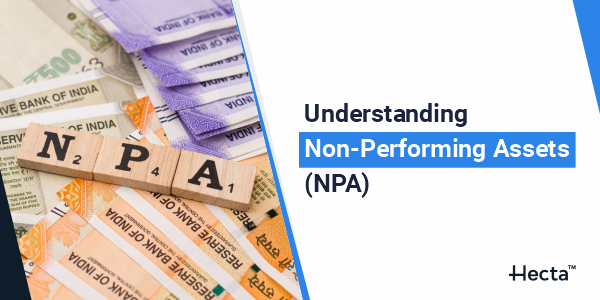
Non-Performing Assets (NPA) represent a critical aspect of a bank or financial institution’s health.
Understanding Non-Performing Assets (NPA): A Comprehensive Insight
In the world of finance, Non-Performing Assets (NPAs) represent a critical aspect of a bank or financial institution’s health. These assets play a pivotal role in assessing the quality and stability of their loan portfolios. NPAs refer to loans or advances that have ceased to generate income for the lender because of default in payment of interest or principal amount. Understanding NPAs involves delving into their types, causes, impacts, and measures to manage them effectively.
NPA Full Form: What Does NPA Stand For?
The acronym “NPA” stands for Non-Performing Asset. An asset is categorized as an NPA if:
Interest or principal payments are overdue: For a specified period, typically 90 days or more, the borrower fails to pay interest or repay the principal amount on the loan.
It shows signs of financial distress: Even if the borrower has not defaulted yet. Still, there are apprehensions about their ability to honor the repayment obligations due to financial difficulties, the asset might be classified as a “stressed asset” which could later turn into an NPA.
Types of NPAs:
Substandard Assets: Loans where the interest or principal remains overdue for over 90 days. These assets pose a higher risk of default.
Doubtful Assets: If the overdue period exceeds 12 months, the asset is classified as doubtful. There’s a significant risk of non-repayment, and it requires substantial provisioning by the bank.
Loss Assets: When the amount overdue crosses the critical threshold of 3 years, the asset is categorized as a loss asset. Recovery in such cases becomes highly improbable, and banks might have to write off these assets from their balance sheets.
Causes of NPAs:
Several factors contribute to the rise of NPA:
Economic Downturns: Economic recessions or slowdowns can impact borrowers’ ability to repay loans, leading to a surge in NPAs.
Inadequate Risk Assessment: Poor credit appraisal processes or inadequate risk management practices can result in loans being extended to borrowers with weak repayment capacity.
External Factors: Natural calamities, policy changes, or global events can disrupt businesses, affecting their ability to repay loans.
Willful Defaulters: In some cases, borrowers intentionally default on loans, causing deliberate NPAs.
Impact of NPA:
Financial Instability: A high level of NPA can weaken the financial stability of banks, reducing their lending capacity and profitability.
Credit Risk: Elevated NPA increases credit risk, making it challenging for banks to attract investors or access funding at favorable rates.
Economic Consequences: A banking sector burdened with NPA can negatively impact the overall economy by limiting credit availability and hindering economic growth.
Managing NPAs:
Prudent Lending Practices: Implementing robust credit appraisal procedures and risk management frameworks can help prevent the accumulation of NPAs.
Restructuring and Recovery: Banks often restructure loans to provide relief to stressed borrowers, enabling them to repay their debts gradually.
Asset Reconstruction Companies (ARCs): Transferring NPA to ARCs allows banks to focus on their core operations while these specialized entities attempt to recover dues from defaulting borrowers.
Legal Recourse: Banks resort to legal measures to recover dues from defaulters, which might involve seizing collateral or initiating insolvency proceedings.
The Way Forward:
Addressing NPA requires a multi-faceted approach involving proactive risk management, regulatory interventions, and a conducive economic environment. Striking a balance between credit growth and risk mitigation while fostering an environment conducive to business stability remains pivotal.
In conclusion, NPA significantly impacts the stability of financial institutions and the broader economy. Understanding their dynamics, causes, and implications is crucial for stakeholders to devise strategies to mitigate their adverse effects and ensure a healthy financial ecosystem.
By acknowledging the nuances of Non-Performing Assets, institutions can adopt prudent measures to manage and minimize their impact, thereby contributing to a more resilient and sustainable financial landscape.

